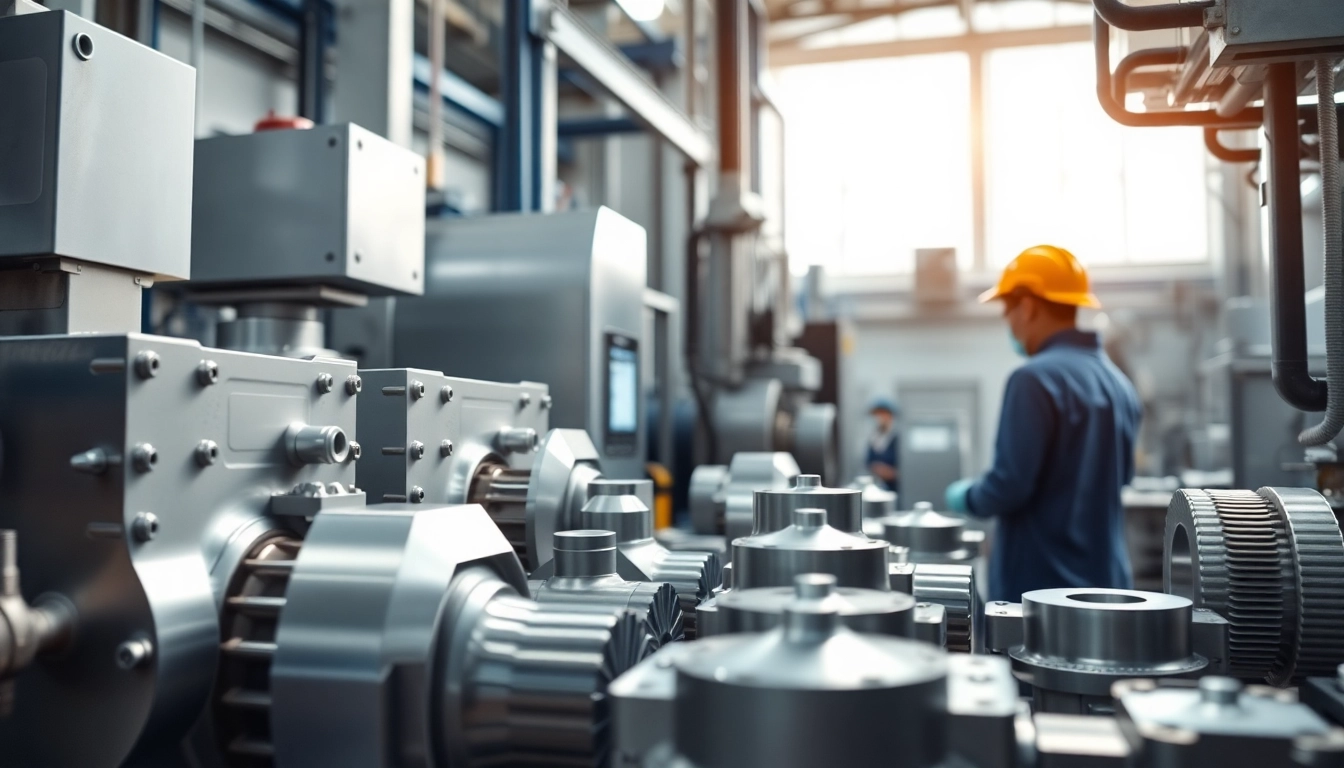The Rise of Die Casting Companies in Malaysia
As a hub for manufacturing and industrial innovation, Malaysia has seen significant growth in its die casting sector. The increasing demand for precision-engineered components, particularly in automotive and electronics, has propelled the rise of numerous die casting companies in Malaysia. This article explores the landscape of the die casting industry, its historical context, and the factors driving competitive success in the region. For a detailed exploration of leading options, die casting company malaysia provides comprehensive insights.
1. Overview of the Die Casting Industry
The die casting industry is characterized by its ability to produce high-volume, intricate shapes with exceptional surface finish and dimensional accuracy. This industry utilizes two primary metals: aluminum and zinc, with aluminum being the most popular due to its lightweight, strength, and resistance to corrosion. Malaysia has become a competitive player in this field, attracting investments from both domestic and international firms.
2. Historical Context and Growth Trends
Historically, die casting in Malaysia began to gain traction in the 1970s, supported by government initiatives promoting industrialization. The establishment of free trade zones and investment incentives contributed to the growth of this industry, making Malaysia an attractive destination for die casting manufacturers. Recent years have seen a surge in demand for advanced manufacturing techniques, leading to an upward trajectory in the industry.
3. Factors Driving Competitive Success
- Technological Advancements: The adoption of advanced die casting technologies, including robotic automation and precision machining, has significantly improved production efficiency and product quality.
- Strategic Location: Malaysia’s geographical position in Southeast Asia offers easy access to key markets, enhancing logistical efficiency for export-oriented manufacturers.
- Skilled Workforce: The continuous development of technical skills among the workforce, supported by educational institutions and training programs, ensures that manufacturers maintain a competitive edge.
Understanding Die Casting Techniques
1. Different Types of Die Casting
Die casting is primarily divided into two techniques: hot chamber and cold chamber. The hot chamber method is ideal for zinc alloys, where the molten metal is retained in the chamber. Conversely, the cold chamber method is preferred for aluminum and magnesium, where metal is poured into the chamber from a furnace. Understanding these methods is crucial for manufacturers to ensure optimal product outcomes.
2. Pros and Cons of Aluminum Die Casting
Aluminum die casting offers a range of advantages, including excellent durability, lightweight properties, and exceptional thermal and electrical conductivity. However, it is essential to consider some drawbacks, such as higher production costs compared to other casting methods and potential challenges in recycling materials effectively.
3. Comparison with Alternative Manufacturing Methods
When evaluating die casting against other manufacturing methods like injection molding or sand casting, die casting stands out due to its higher production efficiency and superior surface finish. Although injection molding may offer more flexibility in design, die casting is often more cost-effective for large production runs, making it a preferred choice for many manufacturers.
Key Players in the Malaysian Die Casting Market
1. Top Die Casting Companies in Malaysia
Malaysia is home to several notable die casting companies, each contributing to the industry’s growth through innovation and quality. Companies like Sena Diecasting and Teknicast have established strong reputations for their precision and reliability, catering to sectors such as automotive, electrical, and consumer goods.
2. Evaluating Industry Competitors
In a competitive landscape, evaluating key industry players is vital for understanding market dynamics. Companies such as Malaysia Die Casting Industries and ARRK Asia have shown remarkable growth through investment in technology and commitment to sustainability. Their strategies often involve a focus on customer satisfaction and continuous improvement, setting benchmarks in quality and efficiency.
3. Case Studies of Success and Innovation
Case studies highlighting successful die casting firms demonstrate innovative approaches to manufacturing. For instance, certain companies have integrated IoT technologies into their production lines, enabling real-time monitoring and quality control, which significantly reduces waste and enhances output efficiency.
Challenges Facing Die Casting Manufacturers
1. Common Misconceptions in Die Casting
Despite its advantages, die casting is often misunderstood. Common misconceptions include the belief that die casting is only suitable for low-tolerance applications. In reality, when executed with precision engineering, die casting can achieve high-tolerance standards necessary for critical components.
2. Technical Challenges and Solutions
Manufacturers face various technical challenges, such as inconsistent material quality and defects in the casting process. Implementing robust quality management systems, investing in skilled labor, and utilizing advanced inspection technologies can help mitigate these issues.
3. Economic Pressures and Market Adaptations
Economic fluctuations and market pressures, including rising raw material costs and competition from low-cost countries, require Malaysian die casting manufacturers to adapt swiftly. Strategies for overcoming these challenges include diversifying supply chains, enhancing automation, and adopting lean manufacturing practices to improve cost-efficiency.
Future Trends in Die Casting for 2025 and Beyond
1. Innovations in Die Casting Technology
The future of die casting in Malaysia could be transformed through innovations such as 3D printing integration and improved die materials that enhance durability and reduce production costs. These advancements will enable manufacturers to meet evolving customer demands more effectively.
2. Sustainability and Eco-friendly Practices
As environmental concerns grow, sustainable practices in die casting are becoming paramount. Companies are increasingly investing in eco-friendly materials, recycling processes, and waste reduction strategies, ensuring that their operations align with global sustainability goals.
3. Predictions for Market Developments
Looking ahead to 2025 and beyond, the die casting market in Malaysia is expected to expand significantly. Factors contributing to this growth include the continued rise of electric vehicles, which require lightweight components, as well as advancements in telecommunication technologies that demand complex die-cast parts. Manufacturers must remain agile to capture these emerging opportunities.
